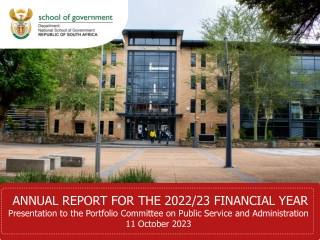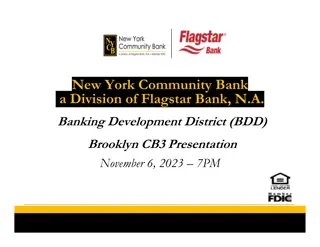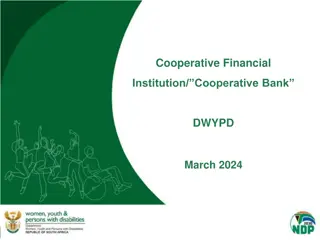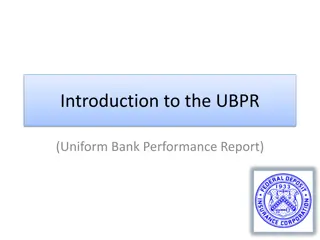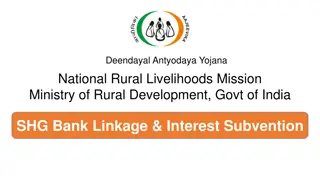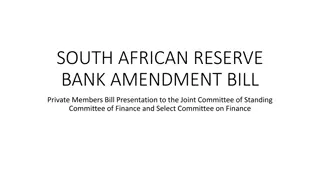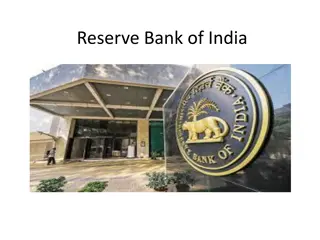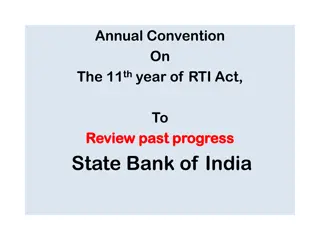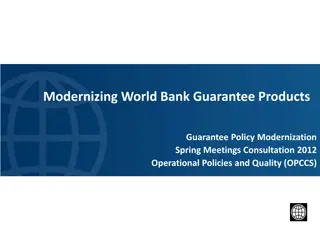The World Bank: International Financial Institution Supporting Development Programs
The World Bank is a vital international financial institution established in 1944 to assist developing countries with financial and technical support for development programs. Originating after World War II, it aids in reconstruction, provides long-term capital investment, and offers loans for various projects. The institution plays a crucial role in promoting economic growth and stability globally.
Download Presentation

Please find below an Image/Link to download the presentation.
The content on the website is provided AS IS for your information and personal use only. It may not be sold, licensed, or shared on other websites without obtaining consent from the author.If you encounter any issues during the download, it is possible that the publisher has removed the file from their server.
You are allowed to download the files provided on this website for personal or commercial use, subject to the condition that they are used lawfully. All files are the property of their respective owners.
The content on the website is provided AS IS for your information and personal use only. It may not be sold, licensed, or shared on other websites without obtaining consent from the author.
E N D
Presentation Transcript
INTRODUCTION The World Bank is an international financial institution that provides financial and technical assistance to developing countries for development programs. World bank is a specialized agency of the United Nation. It established in 1944, has its headquarter in Washington, D.C. It established with the purpose of helping less developed countries raise their living standards
WHY IT CAME INTO EXISTANCE The World Bank was created at the end of World War II as a result of many European and Asian countries needing financing to fund reconstruction efforts. The Bank is successful in providing financing for these devastated (destroyed) countries
WORLD BANK GROUP World Bank Group International Multilateral Investment International Development Association International Centre For Settlement of Investment Disputes (ICSID) International Finance Corporation Bank for Reconstruction and Development (IBRD) Guarantee Agency (IFC) (IDA) (MIGA)
OBJECTIVE To provide long-run capital to member countries for economic reconstruction and development. To induce long-run capital investment for assuring Balance of Payments (BoP) equilibrium and balanced development of international trade. To provide guarantee for loans granted to small and large units and other projects of member countries. To ensure the implementation of development projects so as to bring about a smooth transference from a war-time to peace economy. To promote capital investment in member countries by the following ways; (a) To provide guarantee on private loans or capital investment. (b) If private capital is not available even after providing guarantee, then IBRD provides loans for productive activities on considerate conditions
FUNCTIONS Granting reconstruction loans to war devastated countries. Granting developmental loans to underdeveloped countries. Providing loans to governments for agriculture, irrigation, power, transport, water supply, educations, health, etc. Providing loans to private concerns for specified projects. Promoting foreign investment by guaranteeing loans provided by other organizations. Providing technical, economic and monetary advice to member countries for specific project. Encouraging industrial development of underdeveloped countries by promoting economic reforms
WORLD BANKS TOP BORROWERS Mexico Brazil Turkey Pakistan China India Argentina
WORLD BANKS TOP CONTRIBUTORS USA 16.39% Japan 7.87% Germany 4.49% UK 4.30% France 4.30%
India and World Bank India was one of the 17 countries which met in Atlantic City, USA in June 1944 to prepare the agenda for the Bretton Woods conference. In fact, the name "International Bank for Reconstruction and Development" [IBRD] was first suggested by India to the drafting committee. The Bank lending to India started in 1949, when the first loan of $34 million was approved for the Indian Railways. The aggregate of the Bank's lending in India in the last 45 years was approximately $42 billion. India is the single largest borrower of WB and IDA.
REFERENCES https://in.linkedin.com/company/the-world-bank https://en.wikipedia.org/wiki/World_Bank https://www.slideshare.networld-bank-ppt Park s textbook of Preventive and social medicine (23th Edition)


